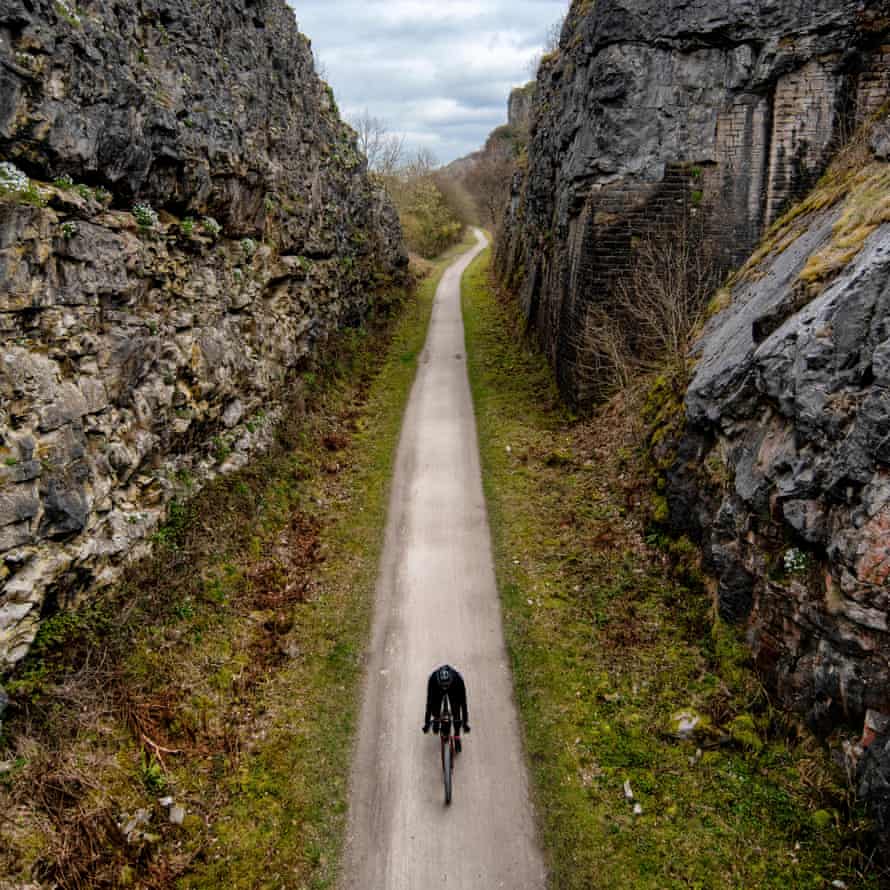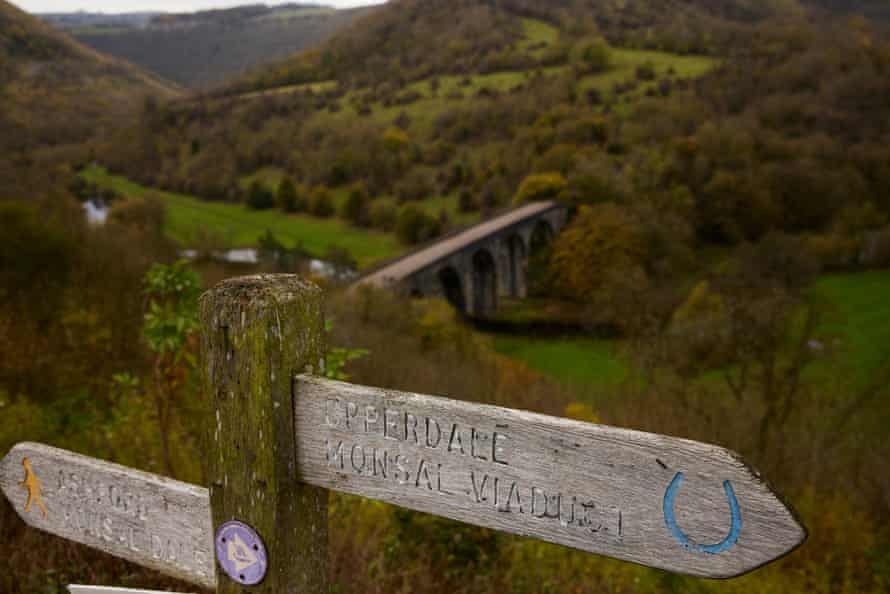Meandering across spectacular viaducts bridging limestone cliffs that drop into the River Wye, the Monsal Trail is considered one of the most scenic walking and cycling routes in the UK.
With slopes covered in purple orchids and cowslips in May, and ox-eye daisies, bloody cranesbill and a lilac dusting of small scabious later in the year, the trail rewards walkers with stunning scenery across the Peak District.
But this haven for wildlife and geology, and attraction for rail heritage enthusiasts, is under threat. The route is at the centre of a battle between outdoor enthusiasts and those who would like to convert it back into a railway line.
After the closure of the Peak and Dales line in 1968, nearly nine miles of the now- abandoned railway were transformed into a trail, incorporating railway tunnels as well as the Monsal viaduct. In 2011 the four Victorian tunnels on the trail were opened to create a complete off-road cycling route, funded as part of the wider Pedal Peak District project to promote cycling opportunities in the national park.

But now the Manchester and East Midlands Rail Action Partnership (Memrap) is calling for the reinstatement of the Peaks and Dales line. The group says it would “reconnect isolated communities between Matlock and Buxton/Chinley and reconnect Manchester with the east Midlands, to and through the Peak District national park”.
However, almost 14,000 people have signed a petition against the proposals. Lee Cooper-Smith, who started the petition and can often be seen walking the trail with his six-month-old daughter, said its loss would have a significant impact.
“It’s such a beautiful, spectacular place that has the bonus of being incredibly accessible, which is unusual for somewhere so magnificent. It allows disabled people and those with young children in tow to access something wonderful really easily,” said Cooper-Smith, who lives 18 miles from the route in the Derbyshire town of New Mills.
For Cooper-Smith, 48, a railway enthusiast who spent three months converting a dilapidated railway carriage into an office in his back garden last year, part of the fascination of the trail is its heritage as a former railway line, where walkers are able to retrace its fascinating history and the old industries along its route.

“The utter joy of the trail is that you feel as if you are experiencing the engineering of yesteryear, and you get a glimpse into the industrial revolution with all the cotton mills. Walking through the tunnels is very exciting,” he adds.
The trail is estimated to attract 300,000 visitors a year. In 2020, during the late summer period alone, it saw more than 200,000 visitors. At its peak, there were almost 2,000 visits a day.
Cooper-Smith said that because of the topography it was not possible to have rail and trail within the valley. “If rail wins, the trail will have to follow the B6465 road. This very action completely changes, and reduces, the unique appeal of the trail, of walking through the tunnels, along the same viaduct – it just becomes a trail. And this reduces the appeal ofa tourism asset that is partly responsible for the £2.3bn Derbyshire’s tourism trade, which many of our local businesses rely on.”
For more than 100 years, the line, created by the Midland Railway by digging several tunnels and bridging the River Wye with the Monsal viaduct, carried passengers, freight and tourists to the fashionable spa town of Buxton.
The route linking Derby and Manchester was considered one of the most scenic in the country, carving its way through Derbyshire’s great limestone hills, with several impressive feats of civil engineering to help it through the hilly terrain. But in 1968 the section between Matlock and Buxton was closed to save money. The Peak District national park authority reopened the route for recreation in 1981, with the trail cutting through limestone between Blackwell and Monsal Head..

Supporters of the rail link argue that local communities lack access to wider transport links. Some politicians hail it as an ideal opportunity for “levelling up”, and a counter-petition created in 2015 to reopen the railway from Derby to Manchester has attracted more than 19,000 signatories.
Memrap claims the reopened railway would provide sustainable public transport for the 13.25 million annual visitors to the Peak District national park – 90% of whom have no other option than to arrive by car. They also claim research has found that the Derbyshire economy is suffering from a steady “bleeding” effect, due to the lack of proper connectivity between Derby and Manchester, along the corridor running south to north through the county.
A spokesperson for the group said: “The campaign aims to correct this with our proposal for reinstating this railway, which once linked Derby and Manchester directly, with proper attention to and respect for the Monsal Trail and the national park through which it must once again pass. It would – this time – serve the national park better than it did previously.”
High Peak MP Robert Largan said the reinstatement of the line could be a great example of levelling up, “bringing inward investment to Derbyshire, and supporting the tourism industry on which so many local people rely. We have an opportunity to push regeneration – not only in my constituency, but across Derbyshire, the wider region and the whole country.”
But earlier this week the pro-railway campaign was dealt a blow when the Department for Transport ruled against offering it any funding. Memrap had put in for a slice of the £500m Restoring Your Railway programme, which was launched in January 2020 as part of the government’s levelling-up agenda.
Despite the setback, Memrap chief executive Stephen Chaytow vowed to continue pursuing the reopening of the railway. “While we are naturally disappointed not to have secured the funding we were seeking through Restoring Your Railway, we continue to pursue other, existing avenues via the appropriate agencies,” he said.
Later this month, the Dartmoor Line, which successfully bid for government funding, will reopen almost 50 years after it was axed. The £40.5m line is the first to be reinstated as part of the initiative.





